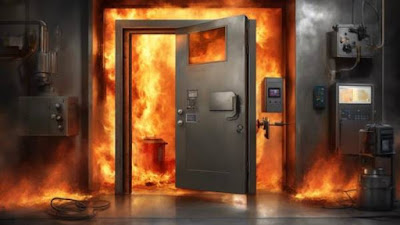A Comprehensive Guide from Leading Manufacturers
The UL mark you see on the edge of a fire-rated door means someone has already done the hard testing to prove this door can actually slow the spread of flames. That little sticker carries more than a logo: it spells out the doors’ hourly rating, names the responsible lab, and delivers a manufacturer imprint you can track back to the factory floor. Building inspectors and facility staff memorize that label number on the fly so they can sign off on code compliance during an afternoon walk-through or clear one last hurdle before an occupancy permit is issued. When the alarm finally rings, to no one’s surprise, really, and the slab swings to, the certified assembly behaves according to its paperwork, keeping people calm and giving firefighters a fighting chance.
How to Maintain Fire Doors for Optimal Performance?
Routine Inspections and Maintenance Duties
Keeping fire doors in sound condition demands more than a yearly glance; it requires disciplined upkeep. Building codes usually stipulate an annual examination, yet corridors choked with foot traffic often need a quarterly or monthly check. Inspectors look at the frame for cracks, the hinges for play, the closer for snags, and the gaskets for rotting. Repairs might be as simple as tightening screws or applying lubricant, though really damaged parts must be swapped out. Every action, from a minor oiling to a hinge replacement, should be logged so the paper trail proves compliance with safety regulations.
Typical Defects and Their Remedies
Age rarely spares anything, and fire doors are no exception; wear reveals itself in a grab bag of familiar problems. A door may swing wide but refuse to latch, or it may hang crooked with a gaping quarter-inch gap. Fixing misalignment usually means adjusting the hinges, while a torn gasket cannot be patched and must be replaced to preserve its barrier. A closer that drags or omits the final snap needs either an overhaul or a complete swap; half measures invite disaster. Alterations such as drilling new locks or shaving the bottom edge, though tempting for quick fixes, cancel the rating and must be reversed if safety is the priority.
















![[dok. Humas PT PP Properti Tbk]](https://infoaceh.net/wp-content/uploads/2025/06/679334e941763-fasilitas-lengkap-pp-properti-hadirkan-hunian-student-residence-di-margonda-depok_665-250x144.jpeg)





















